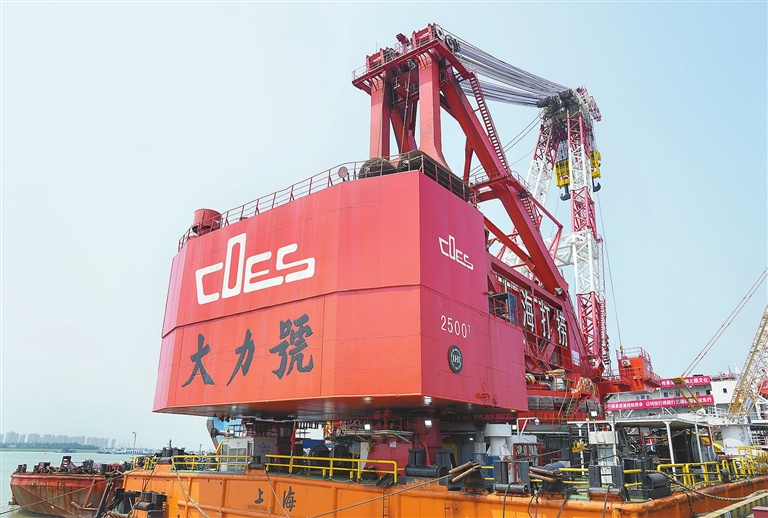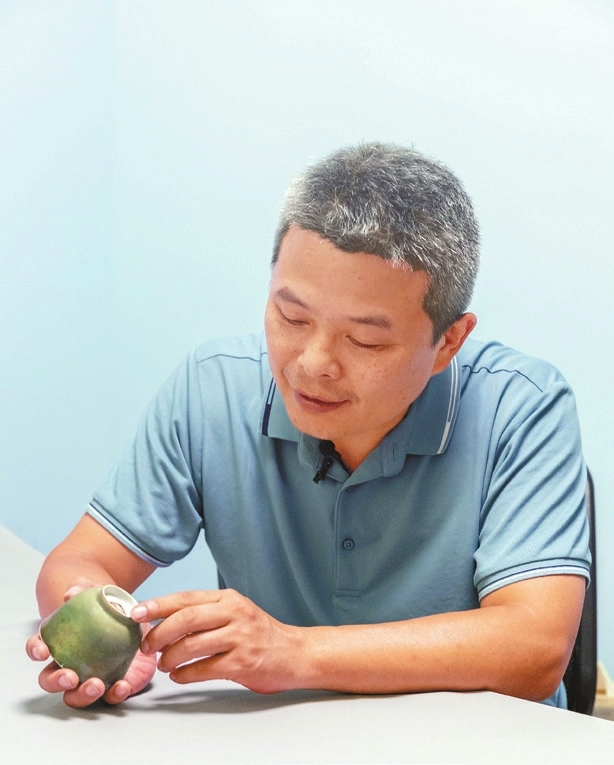

THE Yangtze River Estuary No. 2, an ancient ship “lumbering” 5.5 meters under the seabed northeast of Shanghai’s Hengsha Island, is expected to resurface and meet the daylight again before the end of this year. Archaeologists will carry out follow-up archaeological work, and an ancient ship museum will be built at the old site of the Binjiang Shipyard in Yangpu District. More than 600 artifacts have been salvaged from the Yangtze River Estuary No.2, China’s largest and best-preserved ancient wooden shipwreck. Experts said that the discovery of the relics shows constant cultural exchanges between China and the West, and more discoveries are expected after the ship is fully excavated. The ceramics unveiled were all well-formed and believed to be valued export commodities heading for foreign ports in the early days when Shanghai, where the shipwreck was found, was an open port, as the origin of the historic Maritime Silk Road. As a milestone in China’s underwater archaeology, the Yangtze River Estuary No.2 was a sailing ship from the reign of the Tongzhi Emperor of Qing Dynasty (1644-1911). The shipwreck is about 38.5 meters long and 7.8 meters wide, with 31 cabins. The relics show that there were constant cultural exchanges between China and the West, said Liu Zheng, a member of the China Cultural Relics Academy. For example, Liu said that a rare green glaze porcelain cup produced in Jingdezhen, East China’s Jiangxi Province, shows influences of European porcelain-making techniques. Liu said there would be more to come after the ship was fully excavated, especially some eye-opening lifestyle items. “Those taking a sea voyage would bring with them a lot of daily life necessities such as tableware and food, which may tell us a lot about how these ancient seamen had lived. I’m waiting to see these once the vessel is salvaged,” Liu said. Unlike the Nanhai No.1 shipwreck from the Song Dynasty (960-1279) discovered in the South China Sea 35 years ago, the “younger” Qing Dynasty ship is proof of the long-developing Maritime Silk Road culture in China spanning different periods and carrying on to the present day, Liu said. On March 2, the National Cultural Heritage Administration and Shanghai’s government jointly announced the official launch of the Yangtze River Estuary No. 2 cultural relic preservation project. A major underwater archaeological project in China, it has been listed in the 14th Five-Year Plan for cultural relics protection and scientific and technological innovation. The project adopts a cutting-edge technology using arc beams for non-contact salvage of the ancient ship, according to Chinese media reports. During the on-site operation at sea, the main operation ship of the salvage and relocation project will lay down 22 giant arc-shaped beams around the ancient vessel to form a huge semi-cylindrical caisson. This will wrap the vessel, along with sediment and sea water, with a total weight of more than 10,000 tons without leakage. It will lift the caisson put it in the central open moon pool of another vessel specially made to transport the ancient ship. The entire offshore operation is expected to take two to three months. Experts said that the underwater archaeology work of the past 30 years in China, including the archaeological excavations of Huaguang Reef 1, Coral Island 1 and other important shipwrecks, not only demonstrates the prosperity of the ancient Maritime Silk Road, but also shows the long history of Chinese ancestors’ exploration of the South China Sea. The technologies used in underwater archaeology have become mature, said Zhao Dongsheng, associate professor of archaeology in the school of history of Nanjing University. He said the next step is to build an advanced underwater archaeology virtual laboratory, and train more professionals in this field.(SD-Xinhua) | 
